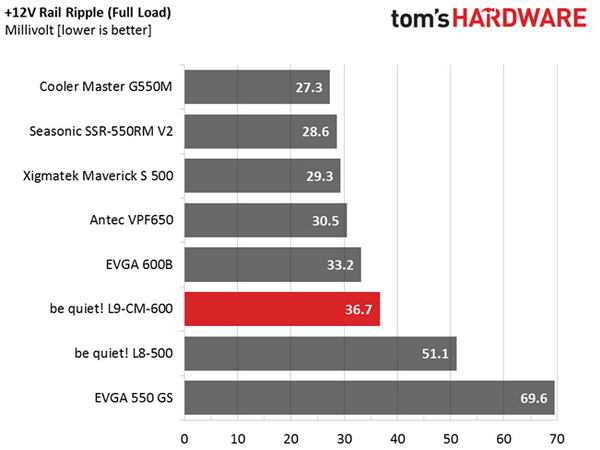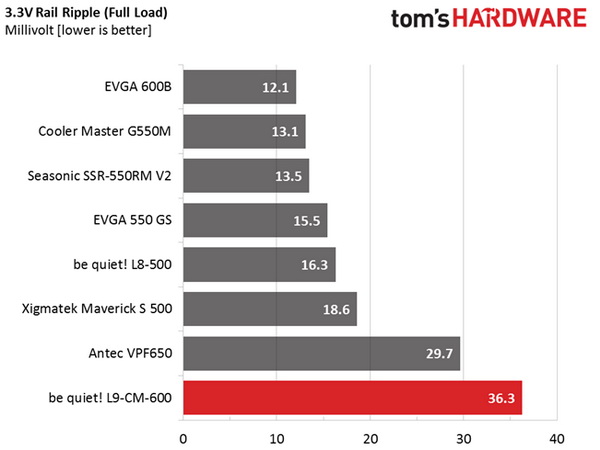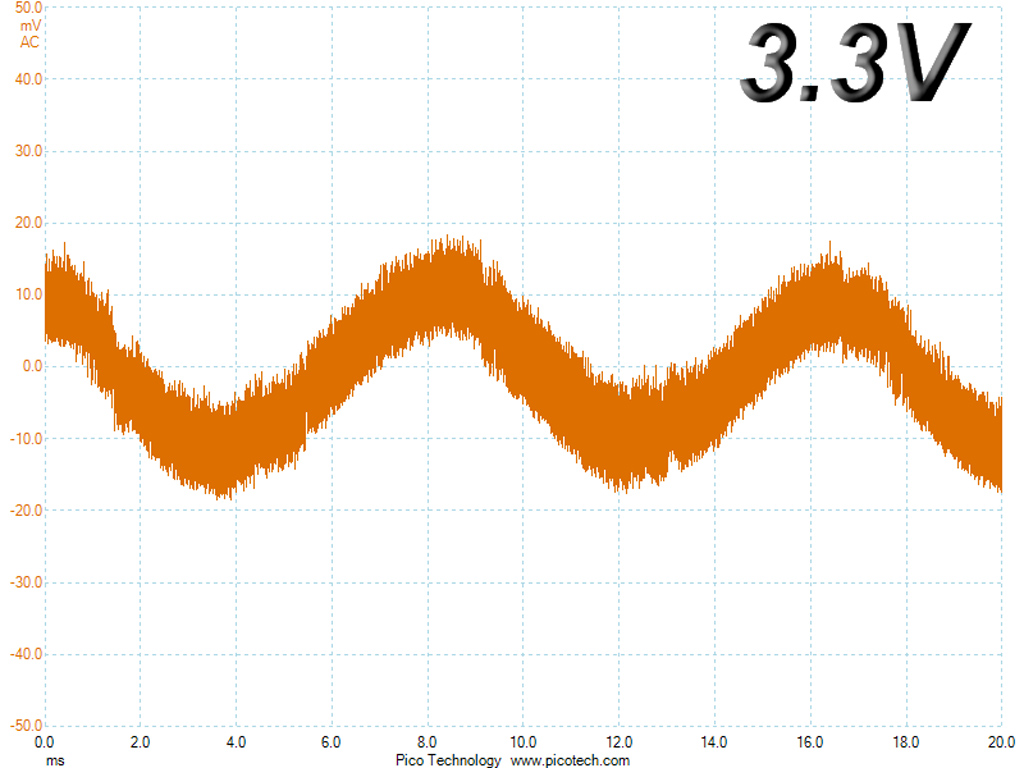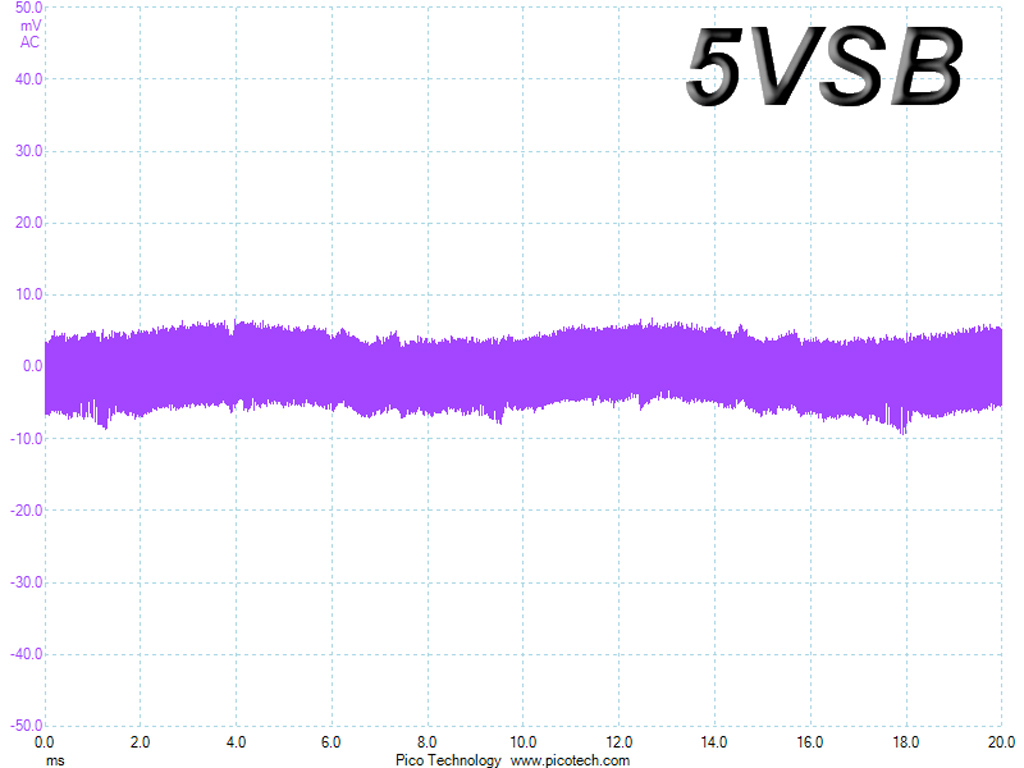be quiet! Pure Power 9 600W PSU Review
be quiet! released the updated Pure Power 9 series that consists of four semi-modular models with capacities ranging from 400W to 700W. Today, we're looking at the 600W implementation to see where it stands in the competitive mainstream market.
Why you can trust Tom's Hardware
Ripple Measurements
To learn how we measure ripple, please click here.
The following table includes the ripple levels we measured on the L9-CM-600W's rails. The limits, according to the ATX specification, are 120mV (+12V) and 50mV (5V, 3.3V and 5VSB).
| Test | 12V | 5V | 3.3V | 5VSB | Pass/Fail |
|---|---|---|---|---|---|
| 10% Load | 7.0mV | 10.4mV | 12.5mV | 10.6mV | Pass |
| 20% Load | 12.5mV | 12.0mV | 16.3mV | 12.7mV | Pass |
| 30% Load | 13.3mV | 13.5mV | 18.8mV | 13.4mV | Pass |
| 40% Load | 13.5mV | 13.7mV | 20.9mV | 15.1mV | Pass |
| 50% Load | 14.4mV | 15.4mV | 22.9mV | 9.7mV | Pass |
| 60% Load | 17.0mV | 17.0mV | 25.7mV | 10.7mV | Pass |
| 70% Load | 19.7mV | 18.8mV | 27.7mV | 11.3mV | Pass |
| 80% Load | 24.1mV | 23.5mV | 31.0mV | 12.3mV | Pass |
| 90% Load | 29.7mV | 26.4mV | 32.9mV | 14.3mV | Pass |
| 100% Load | 36.7mV | 30.4mV | 36.3mV | 14.9mV | Pass |
| 110% Load | 45.3mV | 38.1mV | 38.8mV | 18.0mV | Pass |
| Cross-Load 1 | 22.4mV | 47.8mV | 26.8mV | 18.1mV | Pass |
| Cross-Load 2 | 147.6mV | 38.3mV | 41.9mV | 39.5mV | Fail |




Ripple suppression under normal conditions is pretty good at +12V and 5VSB, and good enough on the minor rails. All hell breaks loose in the CL2 test though, and although the PSU manages to keep ripple under control for the most part, we still saw some spikes exceeding 120mV on the +12V rail. We should note that with 230VAC input we didn't notice any of these spikes. Most likely the increased efficiency allows for lower operating temperatures, so less stress is applied to the +12V circuit.
Ripple Oscilloscope Screenshots
The following oscilloscope screenshots illustrate the AC ripple and noise registered on the main rails (+12V, 5V, 3.3V and 5VSB). The bigger the fluctuations on the screen, the bigger the ripple/noise. We set 0.01V/Div (each vertical division/box equals 0.01V) as the standard for all measurements.
Ripple At Full Load




Ripple At 110-Percent Load




Ripple At Cross-Load 1




Ripple At Cross-Load 2





Get Tom's Hardware's best news and in-depth reviews, straight to your inbox.
Current page: Ripple Measurements
Prev Page Transient Response Tests Next Page Performance, Performance Per Dollar, Noise And Efficiency Ratings
Aris Mpitziopoulos is a contributing editor at Tom's Hardware, covering PSUs.